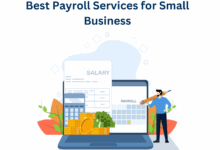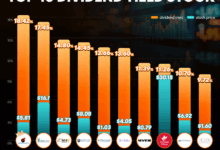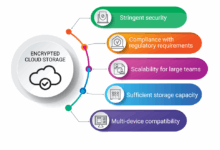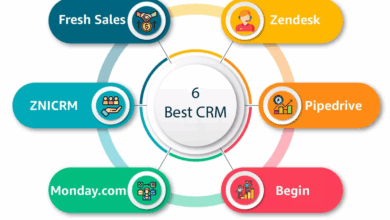Best Credit Cards for Cashback: Top Picks for Maximum Rewards in 2025

In the modern world, credit cards have evolved far beyond simple payment tools. With cashback credit cards, you can earn money back for your everyday purchases, making them an excellent option for savvy shoppers looking to save. But with so many options out there, how do you choose the best credit card for cashback? In this comprehensive guide, we’ll help you navigate through the best cashback credit cards of 2025, detailing everything from product features, benefits, pricing, to where and how to buy them!
What Are Cashback Credit Cards?
Before diving into the best options available in the market, it’s essential to understand what cashback credit cards are and how they work. In simple terms, a cashback credit card is a type of credit card that rewards you with a percentage of cash back on every purchase you make. The reward rates can vary, but generally, they range from 1% to 5% on various categories such as groceries, gas, dining, and online shopping.
Key Features of Cashback Cards:
- Reward Rates: These cards offer cash back in different categories such as 1% on general purchases, 2% on groceries, and 5% on specific categories like travel or rotating categories.
- Sign-Up Bonuses: Many cashback cards come with sign-up bonuses, offering cash back after meeting a spending threshold.
- No Annual Fees: Some of the best cashback cards come with no annual fees, making them a cost-effective option for users who want to earn rewards without paying extra charges.
- Introductory APR Offers: Some cards provide an introductory 0% APR for a limited time, which can be a significant advantage if you plan to carry a balance.
Cashback cards are a great option if you’re looking for a simple and rewarding way to make the most out of your everyday expenses.
Top 5 Best Credit Cards for Cashback in 2025
Let’s dive into the top five credit cards offering the best cashback rewards in 2025. We’ve considered features, rewards rates, annual fees, and more to give you the most up-to-date information.
1. Chase Freedom Unlimited®
- Cashback Rate: 1.5% on all purchases, 5% on travel purchased through Chase Ultimate Rewards®, 3% on dining & drugstores.
- Annual Fee: $0
- Sign-Up Bonus: $200 after spending $500 in the first 3 months.
- APR: 15.24% – 23.99% variable
Pros:
- No annual fee.
- High cashback rate on travel, dining, and drugstore purchases.
- Attractive sign-up bonus.
Cons:
- Some cashback categories are limited to specific purchases.
- High APR for balance carryovers.
Where to Buy: You can apply for the Chase Freedom Unlimited credit card through Chase’s official website.
2. Citi® Double Cash Card
- Cashback Rate: 2% on every purchase – 1% when you buy, 1% when you pay.
- Annual Fee: $0
- Sign-Up Bonus: N/A
- APR: 13.99% – 23.99% variable
Pros:
- Straightforward 2% cashback on all purchases.
- No rotating categories to keep track of.
Cons:
- No bonus categories.
- No sign-up bonus.
Where to Buy: You can apply for the Citi Double Cash Card through Citi’s website.
3. Blue Cash Preferred® Card from American Express
- Cashback Rate: 6% at U.S. supermarkets (up to $6,000 per year), 3% on transit, 1% on all other purchases.
- Annual Fee: $95 (waived for the first year)
- Sign-Up Bonus: $300 after spending $3,000 in the first 6 months.
- APR: 13.99% – 23.99% variable
Pros:
- High cashback rate on groceries and transit.
- Valuable sign-up bonus.
Cons:
- Annual fee applies after the first year.
- High APR for balance carryovers.
Where to Buy: You can apply for the Blue Cash Preferred Card through American Express.
4. Discover it® Cash Back
- Cashback Rate: 5% on rotating categories (up to $1,500 per quarter), 1% on all other purchases.
- Annual Fee: $0
- Sign-Up Bonus: Discover will match all the cashback you earn in your first year.
- APR: 11.99% – 22.99% variable
Pros:
- Rotating categories offer high cashback rewards.
- Cashback match for new cardholders in the first year.
Cons:
- Limited to rotating categories.
- High APR.
Where to Buy: You can apply for the Discover it Cash Back card through Discover’s official site.
5. Capital One QuicksilverOne Cash Rewards Credit Card
- Cashback Rate: 1.5% on every purchase.
- Annual Fee: $39
- Sign-Up Bonus: None
- APR: 26.99% variable
Pros:
- Simple 1.5% cashback on all purchases.
- No rotating categories.
Cons:
- Annual fee.
- Higher APR than some competitors.
Where to Buy: You can apply for the Capital One QuicksilverOne card through Capital One’s website.
Comparison Table
Here’s a quick comparison of the key features of the top cashback cards for 2025:
| Product | Cashback Rate | Annual Fee | Sign-Up Bonus | Pros | Cons |
|---|---|---|---|---|---|
| Chase Freedom Unlimited | 1.5% – 5% | $0 | $200 after spending $500 in 3 months | High cashback rate on travel, dining, etc. | High APR on balance carryovers |
| Citi Double Cash Card | 2% on all purchases | $0 | N/A | 2% cashback on every purchase | No sign-up bonus |
| Blue Cash Preferred Card | 6% on supermarkets | $95 | $300 after spending $3,000 in 6 months | High cashback on groceries and transit | High annual fee |
| Discover it Cash Back | 5% on rotating categories | $0 | Cashback match for first year | Cashback match and no annual fee | Limited to rotating categories |
| Capital One QuicksilverOne | 1.5% on every purchase | $39 | N/A | Straightforward cashback on all purchases | Annual fee and high APR |
Why Choose a Cashback Credit Card?
Cashback credit cards provide several advantages for those looking to maximize their spending. Here are some of the main benefits:
1. Earn Money on Every Purchase
With a cashback card, you essentially get paid for every purchase you make. Whether you’re buying groceries, filling up your car with gas, or enjoying a meal at a restaurant, each transaction rewards you with a percentage back in cash.
2. Flexible Rewards
Unlike points-based reward cards, cashback rewards are straightforward and easy to redeem. You can typically apply your cashback balance as a statement credit, deposit it into your bank account, or even use it to purchase gift cards.
3. No Limits on Rewards
Many cashback credit cards don’t limit how much cashback you can earn in a given year (except for the occasional cap in specific categories). This makes them ideal for high spenders.
4. Low Maintenance
Unlike travel cards that require a lot of planning to maximize your rewards, cashback cards are simple to use with minimal effort required. They don’t require tracking rotating categories or remembering bonus offers.
How to Buy a Cashback Credit Card and What to Consider
Buying a cashback credit card is simple, but choosing the right one can require careful consideration. Here are the steps to ensure you pick the best one for your needs:
- Evaluate Your Spending Habits: Choose a card that offers the highest cashback in categories where you spend the most.
- Consider the Annual Fee: Some cards come with no annual fee, while others may charge up to $95 or more. Weigh this against the rewards you’ll earn.
- Check the APR: If you plan on carrying a balance, choose a card with a low APR to minimize interest charges.
- Look for Sign-Up Bonuses: Many cards offer attractive bonuses to new customers be sure to factor these into your decision.
Additional Considerations When Choosing a Cashback Credit Card
While choosing the best cashback credit card, there are several factors beyond cashback rates and annual fees that you should consider. These factors can impact the overall value and convenience of the card for your specific needs.
1. Foreign Transaction Fees
If you travel abroad frequently, it’s essential to choose a credit card that doesn’t charge foreign transaction fees. Cards like the Chase Freedom Unlimited® don’t have foreign transaction fees, making them an excellent choice for international travel.
2. Cashback Redemption Flexibility
Some credit cards offer greater flexibility in how you redeem your cashback rewards. For example, Discover it® Cash Back allows you to redeem cashback as a statement credit, check, or gift card. Meanwhile, other cards may offer additional options such as booking travel or purchasing merchandise.
3. Customer Support & Protection
When you apply for a credit card, you’ll also want to look at the customer service offerings and protections available. Most major credit card issuers provide extended warranties, purchase protections, and fraud monitoring. These extra benefits can be highly valuable in certain situations.
How to Maximize Your Cashback Rewards
Earning cashback rewards is great, but getting the most out of your rewards requires a strategic approach. Here are a few tips to maximize your cashback:
1. Understand Rotating Categories (If Applicable)
Cards like the Discover it® Cash Back card offer 5% cashback on rotating categories each quarter. Be sure to activate these categories each quarter to maximize your cashback earnings. While it requires some tracking, it can yield substantial rewards.
2. Consolidate Your Spending
To make the most of your cashback, try to consolidate your spending to one or two credit cards, particularly if those cards offer high rewards rates in specific categories. For instance, use the Blue Cash Preferred® Card for grocery and transit purchases and a flat-rate cashback card like the Citi® Double Cash Card for everything else.
3. Pay Your Balance in Full
If you carry a balance, the interest charges can quickly negate the benefits of cashback rewards. Try to pay off your balance in full each month to avoid high APR costs and keep the cashback you earn truly rewarding.
4. Take Advantage of Sign-Up Bonuses
Don’t overlook sign-up bonuses! Many cashback credit cards offer substantial bonuses for new cardholders who meet a minimum spend requirement. These bonuses can provide an instant boost to your cashback earnings.
5. Monitor Special Offers and Promotions
Keep an eye on special promotions and offers from credit card issuers. Some cards may temporarily increase cashback rates in certain categories or offer bonus cashback for specific purchases. Take advantage of these deals to maximize your rewards.
Understanding the Benefits of Cashback Credit Cards
One of the main advantages of cashback credit cards is that they provide a simple, straightforward way to earn rewards. Unlike travel points or miles that can be complex to redeem, cashback offers immediate, tangible value. Let’s break down the core benefits:
1. Financial Flexibility
Cashback rewards can be used in many ways, offering greater financial flexibility compared to other rewards programs. Whether you apply your cashback to reduce your credit card balance, use it for everyday expenses, or even save it for a larger purchase, the choice is yours.
2. No Limitations on Usage
Cashback doesn’t tie you to specific redemption options like travel rewards or points. With cashback, you’re essentially earning real money back, and you can decide how to use it, making it a versatile and attractive option for all consumers.
3. Predictable Rewards
Unlike points programs, where the value of points may fluctuate, cashback rewards are easy to calculate. You know exactly how much you’re earning with each purchase, so you can plan your spending accordingly.
4. Potential for High Returns
For cardholders who strategically use cashback cards, the returns can be significant. Using cards that offer high rewards in specific categories—like groceries, gas, or dining—can lead to substantial rewards. Additionally, cards like the Chase Freedom Unlimited offer bonus cashback rates for travel and other categories.
Cashback Credit Cards for Different Use Cases
Depending on your lifestyle and spending habits, there’s a cashback credit card designed for you. Let’s look at some of the key use cases and which cards work best for each.
1. Best for Grocery Shoppers:
If you spend a lot on groceries, the Blue Cash Preferred Card offers an impressive 6% cashback at U.S. supermarkets (up to $6,000 annually). This card is perfect for families or individuals who frequently purchase groceries and want to earn significant rewards.
2. Best for Dining and Restaurants:
For those who enjoy dining out, the Chase Freedom Unlimited offers 3% cashback on dining, which makes it a solid choice for foodies who frequently dine at restaurants or order takeout.
3. Best for Everyday Purchases:
If you’re looking for simplicity and flexibility, the Citi Double Cash Card is a great option. It offers 2% cashback on every purchase—1% when you buy and another 1% when you pay—making it ideal for those who want straightforward cashback with minimal effort.
4. Best for Travel Enthusiasts:
For frequent travelers, the Chase Freedom Unlimited card is an excellent option, as it offers 5% cashback on travel booked through Chase Ultimate Rewards® and 1.5% on all other purchases. This makes it an ideal travel companion.
5. Best for Rotating Categories:
If you’re willing to track rotating categories to earn maximum rewards, the Discover it Cash Back card is an excellent choice. It offers 5% cashback on categories that change each quarter, such as grocery stores, gas stations, or Amazon.
Where to Buy a Cashback Credit Card
You can apply for cashback credit cards directly from the issuer’s website or through a credit card comparison site. Here’s a list of where you can find these cards:
- Chase Freedom Unlimited®: Apply here
- Citi® Double Cash Card: Apply here
- Blue Cash Preferred® Card: Apply here
- Discover it® Cash Back: Apply here
- Capital One QuicksilverOne: Apply here
Make sure to carefully review each card’s terms and conditions, including the APR, rewards categories, and any sign-up bonuses before making your final decision.
Make the Most of Your Cashback Credit Card
Choosing the right cashback credit card can significantly improve your financial situation by allowing you to earn rewards on everyday spending. With so many options available in 2025, it’s essential to consider your unique needs—whether you prioritize high rewards on specific categories, low APR, or flexibility in how you redeem cashback.
By using this guide, you can compare the best cards, evaluate their features, and make an informed choice that fits your spending habits. Don’t forget to pay attention to the rewards structures, annual fees, and introductory offers that can enhance the value you get from your card.
Start earning cashback today, and let your spending work for you!
Tips for Maximizing Your Cashback Earnings
While most cashback credit cards offer great rewards, there are additional strategies and tips that can help you earn even more and make the most out of your card.
1. Track Your Spending with Cashback Categories
Many cashback cards have categories that change quarterly or yearly. These rotating categories (like grocery stores, restaurants, or Amazon purchases) offer higher cashback rates during certain periods. For example, the Discover it® Cash Back card provides 5% cashback on rotating categories each quarter.
How to maximize this:
- Activate Your Categories: Be sure to activate the cashback categories every quarter. Forgetting to activate them means missing out on bonus cashback!
- Plan Your Purchases: Take note of which categories offer the highest rewards and adjust your spending habits accordingly. For instance, if groceries are the 5% category one quarter, plan to do your shopping during that time.
2. Leverage Sign-Up Bonuses
A significant perk of many cashback cards is their generous sign-up bonuses. These bonuses often require you to spend a certain amount in the first few months after opening the card. For instance, the Chase Freedom Unlimited® offers a $200 cash bonus after spending $500 in the first three months. This can add instant value to your cashback earnings.
How to maximize this:
- Meet the Minimum Spend: Plan to meet the required spending threshold to unlock your sign-up bonus. Be mindful of everyday expenses like groceries, gas, and bills that can count toward the minimum.
- Use the Bonus for Big Purchases: Consider making a larger purchase, like a big-ticket item or a vacation, during the bonus period to reach the spending requirement faster.
3. Use Cashback for Strategic Purchases
You can often use cashback rewards in strategic ways to reduce your financial burden. For example, using your cashback rewards to pay down your credit card balance can help you avoid interest charges, which could negate your rewards. If your card offers cashback that can be redeemed for travel or merchandise, plan ahead to use it on something valuable, like travel-related expenses or gift cards for future purchases.
How to maximize this:
- Pay Down Debt: Apply your cashback rewards as a statement credit to pay off any balance on your card, which will help you save on interest payments.
- Gift Cards and Travel: If your card allows you to redeem cashback for gift cards or travel, you can use your rewards to save on future purchases, like holiday gifts or vacation bookings.
Cashback Cards for Specific Lifestyles
Cashback credit cards cater to different types of spending patterns and lifestyles. If you fall into one of the following categories, there might be a card that’s particularly suited for you.
1. For Families and Parents
If you have a family and do a lot of grocery shopping, the Blue Cash Preferred® Card from American Express offers the highest cashback rate at U.S. supermarkets (6% on the first $6,000 spent annually). This can translate into substantial savings for family grocery trips.
Other cards to consider:
- Chase Freedom Unlimited® offers 3% cashback on dining, which can be useful for families who dine out frequently.
2. For Students and Young Professionals
The Discover it® Cash Back card is an excellent choice for students or anyone starting out. Not only does it offer 5% cashback on rotating categories, but it also comes with a great introductory offer where Discover will match all the cashback you earn in the first year.
Other cards to consider:
- Capital One QuicksilverOne Cash Rewards is another good option for those with average credit and who are looking for a straightforward 1.5% cashback on all purchases.
3. For Frequent Travelers
If you travel often, some cards offer better cashback on travel-related expenses. For example, the Chase Freedom Unlimited® gives 5% cashback on travel purchased through Chase Ultimate Rewards®, and the Citi® Double Cash Card offers 1% cashback on all purchases, plus an additional 1% when you pay, which is a solid option for frequent flyers.
Other cards to consider:
- Capital One Venture Rewards Credit Card is another great option for travelers, though it’s a travel rewards card rather than cashback. It offers 2 miles per dollar on every purchase.
4. For Online Shoppers
If you’re an avid online shopper, make sure to choose a card that rewards purchases from online retailers. The Chase Freedom Unlimited® is perfect for online shopping as it offers 5% cashback on travel booked through Chase and 1.5% cashback on all other purchases, which includes online retail sites.
Other cards to consider:
- Discover it® Cash Back also offers rotating categories that often include online shopping retailers, allowing you to earn 5% back on eligible purchases.
Cashback Credit Cards vs. Other Types of Rewards Cards
There are various types of rewards cards, and while cashback cards are straightforward and easy to understand, you might wonder how they compare to other types of cards like travel rewards or points-based cards. Here’s a comparison to help you decide which type of card best suits your lifestyle.
1. Cashback vs. Travel Rewards Cards
- Cashback cards offer simplicity. You earn cashback, which you can use however you like. This makes them ideal for those who prefer flexibility.
- Travel rewards cards often offer greater value if you travel frequently and are willing to redeem points or miles for travel-related rewards, like free flights, hotel stays, or car rentals.
Best for:
- Cashback cards are best for people who want straightforward, predictable rewards that are easy to redeem for anything.
- Travel rewards cards are best for those who want to earn high-value rewards specifically for travel.
2. Cashback vs. Points Cards
- Points-based cards let you earn points that can be redeemed for a wide variety of rewards, such as merchandise, gift cards, or travel. These cards tend to offer more flexibility in terms of redemption options, but the value of points may fluctuate.
- Cashback cards are simpler and tend to offer a fixed value for every dollar spent.
Best for:
- Cashback cards are perfect for people who want easy, immediate rewards without dealing with complicated point conversions.
- Points cards are better for those who want the option to redeem rewards in many different ways, especially for travel.
Cashback Credit Card Right for You?
Cashback credit cards are a fantastic way to earn rewards on your everyday purchases, and with so many options available, it’s easier than ever to find a card that suits your needs. Whether you’re looking to maximize rewards on groceries, travel, dining, or even general purchases, there’s a cashback card that can help you earn money back.
Things to consider before choosing your card:
- How much you spend in different categories (groceries, dining, travel, etc.).
- Your willingness to track rotating categories and activate them when necessary.
- Whether you prefer flexibility with cashback or a more specific rewards structure (like travel points or merchandise).
Once you’ve identified a card that fits your lifestyle and spending habits, you’ll be well on your way to earning cashback and making the most of your purchases. Happy earning and spending wisely!
How Cashback Credit Cards Fit into Your Financial Strategy
Using cashback credit cards can be an effective way to optimize your finances, but it’s essential to integrate them into a larger strategy. Here are some key considerations to keep in mind:
1. Balance Rewards and Spending Habits
While cashback credit cards can offer attractive rewards, it’s important to ensure that your spending aligns with the rewards categories. For example, a card offering 5% cashback on grocery purchases is fantastic, but it only benefits you if you spend a significant portion of your monthly budget on groceries. Over-extending yourself in areas that don’t align with the card’s rewards could lead to unnecessary debt.
2. Avoid Carrying a Balance
One of the biggest pitfalls with cashback credit cards is that carrying a balance from month to month can cancel out your rewards. Credit cards often have high-interest rates, and if you don’t pay your balance in full, the interest charges will quickly negate the value of any cashback you’ve earned. It’s crucial to maintain good financial habits, such as paying off your balance in full every month.
3. Building Credit Through Responsible Use
Using cashback cards can also help you build or improve your credit score. By making timely payments, keeping your credit utilization rate low, and avoiding late fees, you demonstrate responsible credit usage to credit reporting agencies. Over time, this can result in a higher credit score, which in turn can help you qualify for lower interest rates on loans and other financial products.
4. Track Your Rewards and Payments
It’s important to regularly monitor your rewards and payments. Some cashback credit cards have an online portal or app that lets you track your rewards in real-time. This helps you stay aware of how much cashback you’ve earned and when it’s time to redeem it.
Additionally, by staying on top of your payments, you ensure that you never miss a due date, avoiding late fees that could diminish the value of your cashback.
What to Avoid When Using Cashback Cards
Even though cashback cards are a fantastic tool for earning rewards, there are a few things you should avoid to ensure you maximize the value of your card.
1. Ignoring Fees
Some cashback cards come with annual fees, and while this might be justified in some cases (for instance, if the rewards you earn offset the cost), it’s important to factor in these fees when calculating your potential earnings. Be sure that the cashback rewards and bonuses outweigh any annual fee before applying.
Example:
The Blue Cash Preferred® Card has a $95 annual fee, but it offers 6% cashback on groceries (up to $6,000 per year) and 3% on transit, which is a significant return for people who spend a lot in those categories.
However, if you don’t spend enough in those categories, the fee could make the card less advantageous. Always do the math.
2. Over-complicating with Multiple Cards
While having multiple credit cards with different cashback categories may seem like a great way to maximize rewards, it can quickly become overwhelming. Managing several cards, each with varying reward structures and payment due dates, could cause confusion and missed payments.
Tip:
If you prefer to keep things simple, consider focusing on one or two cards that offer high cashback rates across various categories, or go with a flat-rate cashback card that offers a consistent percentage on all purchases, such as the Citi® Double Cash Card.
3. Falling for Introductory Offers Without Understanding Long-Term Costs
Introductory offers like 0% APR for the first 12-18 months or high cashback bonuses can be enticing, but you need to understand the card’s long-term costs. After the introductory period, the APR may jump significantly, which could turn your card into an expensive option if you carry a balance.
Example:
The Chase Freedom Unlimited® may offer a 0% APR for the first 15 months, but after that, the APR can rise to 19.24% – 27.24% Variable. Be sure to calculate whether the benefits outweigh the risks and costs over time.
4. Not Taking Advantage of the Full Cashback Potential
Many cashback cards have quarterly or monthly bonuses for certain spending categories, such as restaurants, gas stations, or department stores. If you don’t actively track these categories and miss out on activating bonus offers, you’re leaving money on the table.
Cashback Credit Cards for Business Use
Business owners can also benefit from cashback credit cards, especially if their business incurs regular costs on materials, advertising, travel, and employee expenses. Many credit card issuers offer business versions of their popular cashback cards, providing similar rewards tailored to business needs.
Best Business Credit Cards for Cashback:
- Chase Ink Business Unlimited® Credit Card offers 1.5% cashback on every purchase with no annual fee, making it an excellent option for business owners who want a simple way to earn cashback on all purchases.
- American Express Blue Business Cash™ Card offers 2% cashback on the first $50,000 spent each year, then 1% on all other purchases. This is particularly beneficial for businesses with higher spending needs in specific categories.
Future of Cashback Credit Cards in 2025 and Beyond
As we move further into 2025, cashback credit cards will continue to evolve to meet consumer needs. Expect to see more personalized rewards, integration with digital wallets, and enhanced benefits for loyal customers. Credit card companies are increasingly using data analytics to tailor cashback offerings based on spending patterns, which means you may see even better deals and customization in the future.
1. Integration with Digital Wallets
Many credit card issuers are working to seamlessly integrate their cashback cards with digital wallets like Apple Pay, Google Pay, and Samsung Pay. This allows for smoother, faster transactions while still earning cashback.
2. Customizable Cashback Categories
Some issuers are experimenting with offering customizable categories for cashback, where you can choose which types of purchases you want to earn more cashback on. For example, you could select dining, travel, or groceries as your preferred categories.
3. Sustainability and Social Responsibility
There is a growing trend for credit cards to align with eco-friendly initiatives or charitable causes. In the future, we may see more cashback credit cards that donate a portion of their rewards to environmental or social organizations. This could attract consumers who want to make a positive impact through their spending.
FAQs (Frequently Asked Questions)
1. Can I get cashback for subscription services like Netflix or Spotify?
Yes, many credit cards offer cashback on subscription services. For instance, the Chase Freedom Unlimited® card offers 1.5% cashback on all purchases, including streaming services like Netflix or Spotify.
2. Do cashback rewards expire?
It depends on the card issuer. For example, Discover it® Cash Back doesn’t have an expiration date for cashback rewards as long as your account remains open. However, some cards may have expiration dates or certain conditions for redeeming rewards, so always check your card’s terms.
3. Can I transfer my cashback to another account?
In some cases, you may be able to transfer your cashback rewards to another account or use them for various purchases. However, this can vary by card issuer, so check with your provider for specific details.
4. What’s the best way to redeem cashback rewards?
The best way to redeem cashback depends on your personal financial goals. You can apply cashback as a statement credit, use it for gift cards, or redeem it for travel or merchandise. Some cards also allow you to transfer cashback to a linked bank account.
5. Can cashback credit cards be used for business expenses?
Yes, many cashback cards, including business versions of popular cards, are ideal for business expenses. You can earn cashback on office supplies, advertising, and other business-related purchases.









